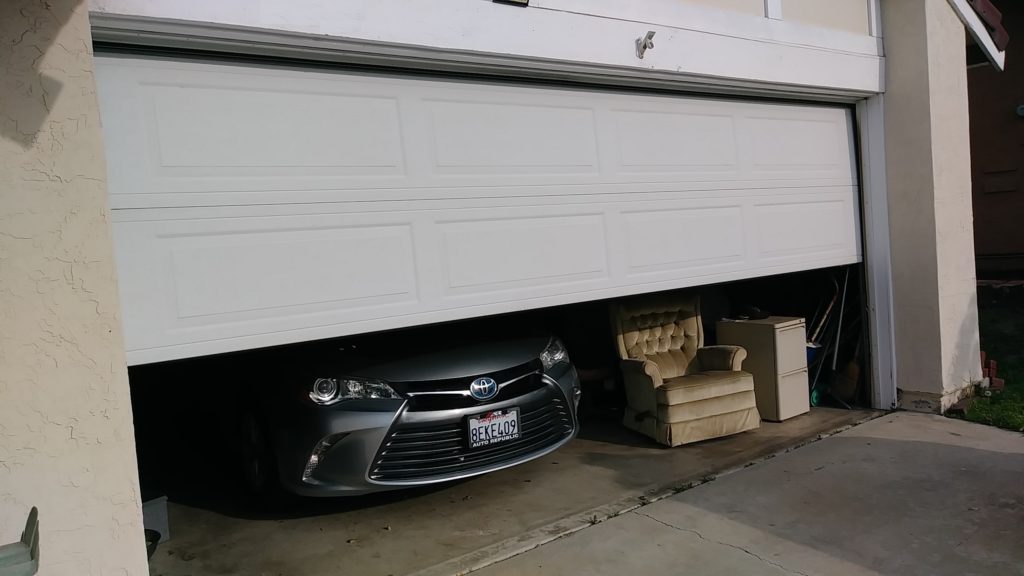Garage doors have undergone many improvements since its invention. Equipping our homes and businesses with them is now just a normal part of modern, everyday life. However, this has not always been the case. Before the early 1900’s, when the automobile was first becoming popular, people routinely used horses and carriages for transportation and kept them safely housed in stables and carriage houses when they weren’t being used. As automobiles quickly replaced the horse drawn carriages, a need arose for a way to safely store these new machines where weather and vandalism would not affect them.
 Source: Flickr
Source: FlickrNecessity often precedes invention and in 1902, a company known as the Cornell Iron Works advertised a type of garage door called a float over door. This door was one of the first commercially available doors available for installation on sheds. It was also about this time that the French word garage was first used in North America as a name for these vehicle storage sheds. Four years later, an improved door was advertised that functioned by being lifted upward, bearing some similarity to the garage doors used today. Further improvements came along in 1935 when the one piece wooden door was first developed and marketed.
Today, the modern garage doors around the globe, come in a wide variety of styles, colors, materials and functions. Single panel, sectional and roller models are some of the most widely used ones, often constructed with materials that are specifically suited for the climate where they will be installed. Some models are insulated, and some are constructed of simple panes of metal, fiberglass, wood or vinyl. They can be made to blend into the facade of the home, or they can be readily visible and function as somewhat of a focal point for the garage itself.
Early garage doors were often very heavy and difficult to open. This problem led to the development of automated openers that could easily lift the doors and keep them held out of the way until the opener was instructed to close the door. One problem with the early automatic door openers used on garage doors, was safety. Because they came down with tremendous force, anything that was in the way of the door could be crushed when the door was closed. Many injuries and even deaths occurred as a result. This problem was addressed with the development of sensors capable of determining when an object, person or pets were located in the zone where the door might impact them as it closed. These sensors greatly improved the overall safety of these doors and many countries have declared them to be a mandatory addition to any garage door systems sold.
While instructions are available for homeowners to do their own installation of garage doors and openers, it may not be the wisest decision. Garage door assemblies depend upon large torsion springs to supply the force necessary to lift and hold the heavy doors. These springs must be properly installed, aligned and balanced to prevent any problems with the system. Failing to install these correctly can result in the door breaking free and falling unexpectedly with a force great enough to cause injury or even death. Therefore, having the garage doors professionally installed and maintained can be the safest option. A professional’s website on a local firm can usually found and hired to fix the damaged ones and for repairs and maintenance.
Garage doors are available for all sizes of opening. The residential ones are usually installed as single or double units, but many homes that have larger garages might have three or more doors. Often, garage doors can be specially fitted for specific needs. For instance, homeowners that have large pieces of lawn equipment might have a specially outfitted mower size garage door. Likewise, homes located in golfing communities routinely have a separate bay and garage door specifically for their golf cart.
